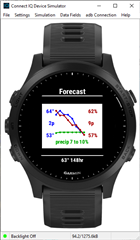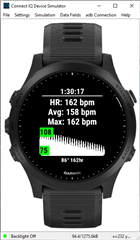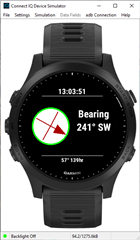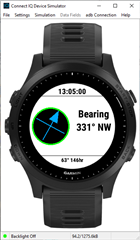Hi Gents,
I'd say I'm something like 80% done with my project.
I'd need your input on these two last parts :
- I would like to be able to display a water level graph depending on the tidal data I retreive, such as this one : http://maree.info/125
is there a tool to do so in the Garmin API? If not, is there a known API I could use?
2. I would like to diplay an image on the watch face. This image will change depending on a value I retrieve from a webrequest() call. Would you have some tips on where to start?
Cheers,
Nico







